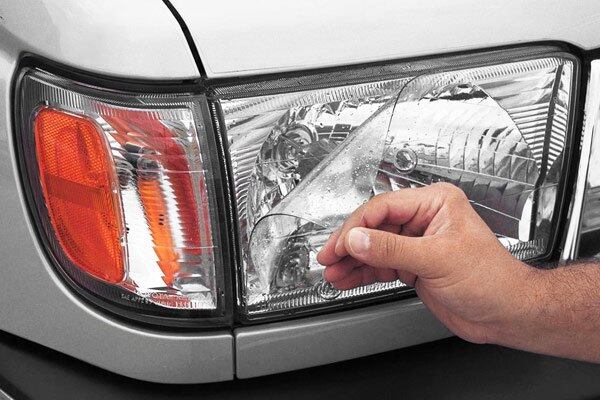Email format error
Email cannot be empty
Email already exists
6-20 characters(letters plus numbers only)
The password is inconsistent
Email format error
Email cannot be empty
Email does not exist
6-20 characters(letters plus numbers only)
The password is inconsistent

wholesale colorado head light cover manufacturer,supplier,exporter,factory
The colorado head light cover is made of a plastic called polycarbonate. Polycarbonate is a plastic developed by the United States in the 1960s. Some high-end automotive lampshade molds require extremely high precision injection pressure and time. At the same time, the toner for lampshade injection molding uses high-grade transparent toner to transmit light. Polycarbonate has the advantages of high hardness, high strength, high toughness, and good UV resistance and light transmittance. Therefore, the light transmittance of the high-quality lampshade is still very good after long-term use.

The entire mold of the counterfeit lampshade is a reverse drawing modeling of the original lampshade. Since the original lampshade will be slightly deformed during the injection molding process and the cooling process, the reverse surveying and mapping map inherits this deformation, and the finished product is determined from the drawing. Inaccurate size, in order to reduce material cost and processing cost, low-hardness mold steel is used as the mold opening material of the counterfeit lampshade, and the mold itself will be deformed during the injection molding process, which affects the dimensional accuracy of the injection molded product. In order to reduce material costs and processing costs, the fake lampshade injection material is made of acrylic, which has high transparency and is harder. It looks beautiful when it is new but has insufficient toughness, fragile, and has no UV resistance. It is easy to age and yellow and fade under outdoor sunlight. As a wholesale colorado head light cover manufacturer, supplier, exporter, factory, we will show you the advantages of polycarbonate.
Why use polycarbonate as a colorado head light cover?
✅Its impact strength is the highest among all engineering plastics, higher than polyoxymethylene, almost 3 to 5 times that of polyamide, and similar to phenolic resin and polyester resin reinforced with glass fiber.
✅It has high mechanical strength. Its tensile and bending strength are similar to those of polyoxymethylene and polyamide, and its elongation at break reaches 90% (25 degrees Celsius). Moreover, the strength is improved at low temperature, and the decrease is not much at high temperature.
✅It has high heat resistance and cold resistance, and can be used for a long time in the temperature range of +130~-100 degrees Celsius. It has no obvious melting point. Its melting temperature is generally between 220 and 230℃, and its decomposition temperature is generally above 300℃. The heat distortion temperature of 18.5 kg/cm2 is 130~140℃, which is higher than polyoxymethylene and only lower than polysulfone and polyphenylene ether. The embrittlement temperature is below minus 100℃.
✅Its transparency is very good, the light transmittance of the film can reach 89%, second only to plexiglass, and it can also be colored.
✅Polycarbonate products are odorless, tasteless and odorless. The corrosion resistance is better than that of polyamide. The product will not change significantly when it is in contact with the following media for a long time at room temperature: 20% sulfuric acid, 20% nitric acid, hydrochloric acid, 40% hydroterbium acid, salt water, potassium bromide, 30% Hydrogen peroxide, lactic acid, oleic acid, aliphatic hydrocarbons, alcohols, animal and vegetable oils, etc. But it is not resistant to alkali, and dilute caustic soda, ammonia, and organic amines can react quickly and be destroyed. It is also not resistant to concentrated sulfuric acid, nitric acid, aqua regia, and slightly corroded by formic acid and acetic acid.
✅Polycarbonate has good oil resistance. The weight of the sample is basically unchanged after being immersed in gasoline for three months.
✅Polycarbonate is soluble in chloroalkane, with a solubility of 0.31 g/ml in dichloromethane, 0.1 g/ml in chloroform, 0.33 g/ml in tetrachloromethane, and monochlorobenzene The medium is 0.06 g/ml. Solvents such as benzene, acetone, ether, and ethyl acetate can swell polycarbonate, but do not dissolve it.
✅Polycarbonate has very little water absorption. When the relative humidity is 50%, the maximum moisture absorption is 0.16%. If it is not soaked in water at 23℃ for a week, the water absorption rate is 0.4%. After soaking in boiling water for a week, the water absorption rate is 0.58%.
✅In order to make polycarbonate more comprehensive, it can also be modified and enhanced. If adding less polyethylene or ABS resin, the internal stress of the product can be reduced. Adding polytetrafluoroethylene can improve the abrasion resistance of commercial products, and adding chlorinated polyether can improve its impact strength.
✅Polycarbonate can also be reinforced with sloped glass fibers, and its co-strength, fatigue resistance, and heat resistance can be greatly improved, but impact resistance and transparency have been reduced.

